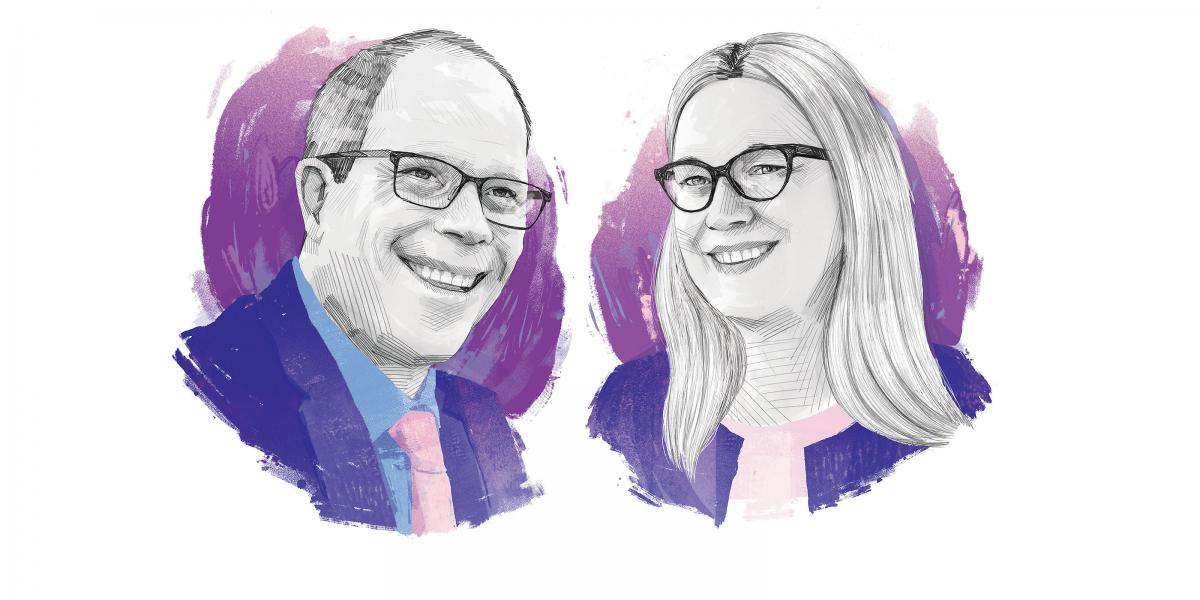The Art of Advocacy: A Conversation with Gates Foundation President Mark Suzman
True change requires persuasion from the ground up.
When Beth Fredrick sat down with Mark Suzman, chief strategy officer and president of the Bill & Melinda Gates Foundation, she had one topic to discuss: advocacy. Reflecting on his experiences at the Foundation and advising the UN Secretary-General, Suzman said he finds advocacy “absolutely central.” Fredrick is executive director for the Advance Family Planning partnership at the Bill & Melinda Gates Institute for Population and Reproductive Health and co-director of the Center for Public Health Advocacy. She shared surprises from her work expanding access to contraceptive information, services, and supplies across Africa and Asia. They discussed the intricacies of advocacy—what works and how to make a difference and sustain it.
BF: You wrote recently that for the Gates Foundation to be on the front lines of change, you rely on technical partners to deliver interventions that change lives. How would you prioritize advocacy?
MS: Broadly speaking, advocacy is absolutely central. If you want to reach real people, you have to do the math around persuading some coalition of partners, players, and resources. Whether it’s around family planning or financial inclusion and bank accounts for women, that has to be built in at the start.
BF: What are some of the big global public health challenges that could benefit more from advocacy?
MS: Family planning is an area where we think we’ve actually made enormous progress over the last seven years since the London Family Planning Conference. But we also know we are very likely to miss our 2020 target for the number of women [provided with an] appropriate choice of contraceptives.
One of the challenges is how you build the network of credible, local actors and partners working down deep at the community level. That’s a question I’ll actually ask of you. How do you build local coalitions so that they will last and will outlast us?
BF: From the outset with AFP, we worked with NGO partners and service providers as the advocates for family planning and contraceptive information, services and supplies. But early on it became clear that unmet need for advocacy training equally applied to policymakers.
Policymakers in local governments were desperate to figure out how to prioritize and move issues in their government. They didn’t have the skills to surface the problems or promising interventions up through the ministry of health, the ministry of finance, or parliament. That really changed our view of how to influence policy decisions and sustain advocacy. We saw quickly that if we didn’t work at the county, state or district level, we were missing a big part of sustainability.
MS: What you’re talking about is really at the community and grassroots level, which is absolutely where we want the final outcomes to happen. What we see as the other end is, how do you put in place a political or policy framework which actually mandates this as a priority?
If you don’t have the grassroots, it doesn’t become sustainable. If you just set the targets, but you don’t have anything pulling or pushing it down to the grassroots community level, then it withers on the vine. We found we need both.
BF: One of the other things that we learned from our partners at the country level is that governments had no problem developing national plans, plans on family planning, on youth development, on health overall. Yet there wasn’t a lot of recognition that the broader community, or coalitions, could play a role in shaping those plans. That’s been a real shift that I’ve seen over AFP’s 10 years. We’ve built coalitions that have strong enough partnerships with the government that they’re now brought in as technical resources.
MS: I remember having a conversation with the Minister of Finance in Nigeria, Ngozi Okonjo-Iweala, when she was still in office. In a polite way, when I was sitting in her office in Abuja, she said, “You’re really causing trouble for me because I am getting these constituencies coming in and they are asking me to meet my FP 2020 commitments, and I have to meet my Global Fund co-financing commitments and my Power of Nutrition commitments, and commitments for polio eradication. They’re all coming out of the same budget. I am a champion of health within this government, and I need you to help me think about, and have your partners think about, how these things integrate.”
The general view among people working on long-term family planning is that when you wrap family planning into a wider set of health interventions, it tends to be a loser. That historically was the case, if you look at finance in the 1980s and ’90s.
One of the encouraging things now is if you look at new mechanisms and the Global Financing Facility. Every Woman Every Child, for example, which is a mechanism we’re a significant component part of, is really designed to try to help the country come up with its broad plan that looks right across the reproductive, maternal child health plus nutrition agenda and say, we have a great plan that is going to cover all of these and that allows partner money from donors to help support that.
BF: Let’s shift a little bit. What’s the future for public health students who aspire not just to be public health researchers or program people but to go out front as advocates. What’s their future look like?
MS: We hope that it’s enormously promising. You’ve got a lot of policymakers and places trying to figure out: okay, we wish to prioritize this, but we’re not quite sure what the right interventions are. It needs that active, engaged, driven, informed-by-facts health advocacy from the next generation of your students.
